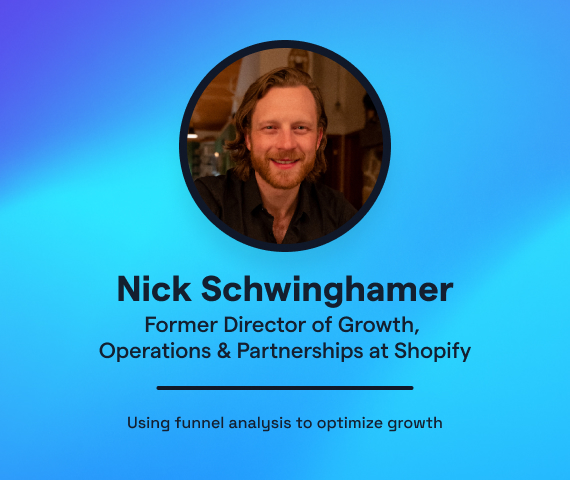9 Tips for starting a business: even if you don’t have an idea yet
The idea of founding a shiny new start-up is appealing to many people. You have a great idea, so you should make it into a business, right? Wrong.

Founding a startup comes with many struggles, are you prepared to make the necessary sacrifices for the idea, and is the idea worth the struggle?
After building several businesses over the years, here are nine pieces of advice to accelerate your growth.
What type of business should you build?
When deciding the type of business to build, thinking about the problem rather than the solution will get you further along the road to success.
1. Don’t choose randomly.
It can be easy to get carried away with an idea, trying to fit a business within a trend or shiny new technology you want to use.

Iraklis Alexopoulos, Founder & CTOIf you want success, it’s better to consider niche problems in industries you understand. Great ideas for solutions start with a deep understanding of the problem.
2. What type of lifestyle do you want?
When considering the type of business to build, thinking about the lifestyle you want is an essential factor. You need to be doing things you enjoy, that fulfill you if you want success.
If you hate the idea of going out and fundraising, then why are you considering building a business that would rely on capital? If raising capital makes you shudder, consider a more niche problem you can bootstrap.

Iraklis Alexopoulos, Founder & CTOWhen you start a business, you’re going to spend most of your time working on it, so you may as well create something that makes you happy. Building something that requires you to do stuff you hate all the time is not motivating.
Use your strengths to inform the type of business you want to build and think about how you can optimize for happiness. What will you enjoy spending your time on, and what sacrifices are you willing to make to spend your time doing that?
3. Should you build a B2B or B2C startup?
Another important consideration when defining your problem is to consider who your final customer will be.
Businesses tend to have well-defined problems and are more willing to spend money to save time on their problems.
B2C customers may need more help in understanding the problem you want to solve for them and why they should pay for a solution.
The business owner’s mindset
1. Just get started
Procrastination and analysis paralysis are problems for every founder. They spend hours consuming content, deciding where to start, and dwelling on problems. The best way to learn is to get started; you will realize there isn’t one magical way to do things.
Get your hands dirty and start experimenting. Basically, remove all reasons to procrastinate e.g. don’t know how to code? Use a no-code website/app builder.
2. Create a sense of urgency
Creating a sense of urgency will help you stop procrastinating. Break down what you want to achieve into smaller components and then try to achieve them one after another. Divide and Conquer step by step.
When the tasks are smaller, they’re less daunting. When you start to check off the small things that contribute to the bigger picture, you’ll feel a sense of accomplishment which will build momentum to drive you forward.
3. Network with other founders
Building a network with other founders is a great way to get advice, learn from the mistakes and successes of those before you, and help you realize you’re not the only one with this problem.
Networks like Growth Mentor and Indie hackers give you access to other founders who can share stories and ideas about how to keep driving forward.
Listen to the podcast episode that inspired this blog post:
How to validate your ideas
1. Reflect on opportunities in the real world
Abstract ideas won’t help you when building a business. Creating value for your customers means solving real-life problems. Something you think is interesting or exciting may not be what people need.
Your solution needs to come from real-world observations. How do you get those actual world observations?
Observing different industries, businesses, and operations and looking for recurring themes, patterns, and questions that arise will allow you to do something better.
Most importantly, when getting the chance to be in front of your potential customers, do more listening and less talking. Don’t lead the conversation to hear what you want to hear but get unfiltered, genuine feedback.
2. Talk to customers
The number one rule for validating your idea is to talk to your customers and understand their life, how they do things and how you could build a solution to help them.
Talking to your customers doesn’t mean asking vanity questions such as “if this existed, would you pay for it.” Ask questions about how they go about their lives every day, then you can start to draw conclusions about what they need.
3. Use the Mom Test
The Mom Test is a framework for asking questions that even your mom can’t lie to you about. It gives you clear answers on whether or not your idea will be useful to your ideal customers.
Find out where your audience hangs out – it could be digitally in Facebook groups or at in-person events. Once you find the right people to talk with, have 1:1s with them and listen to their struggles. Only then will you be able to help them find a solution.
Use the wisdom of others to build a successful startup
You don’t need to go it alone when building your startup. There are plenty of other founders out there who had the same struggles as you and want to help you avoid making the mistakes they did.
Start taking the steps towards a great startup by talking to a Growth Mentor.






